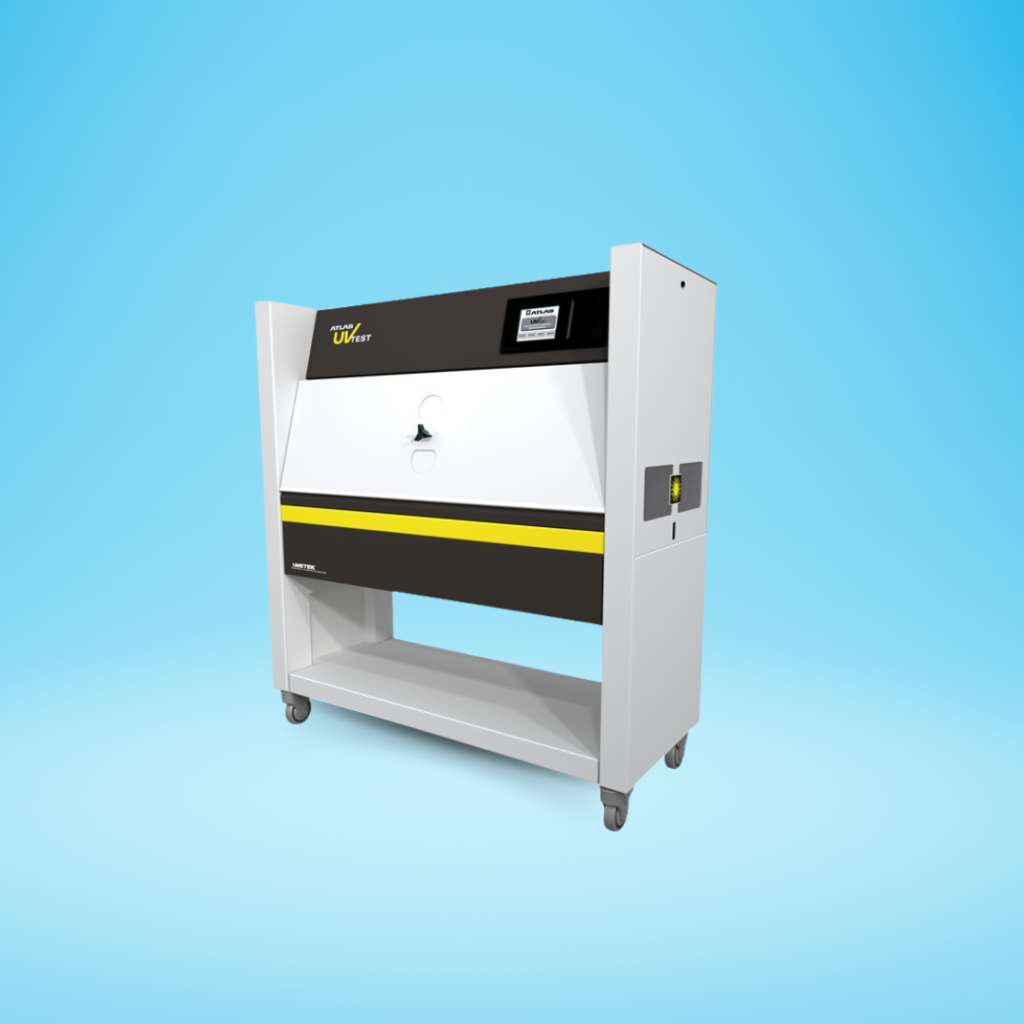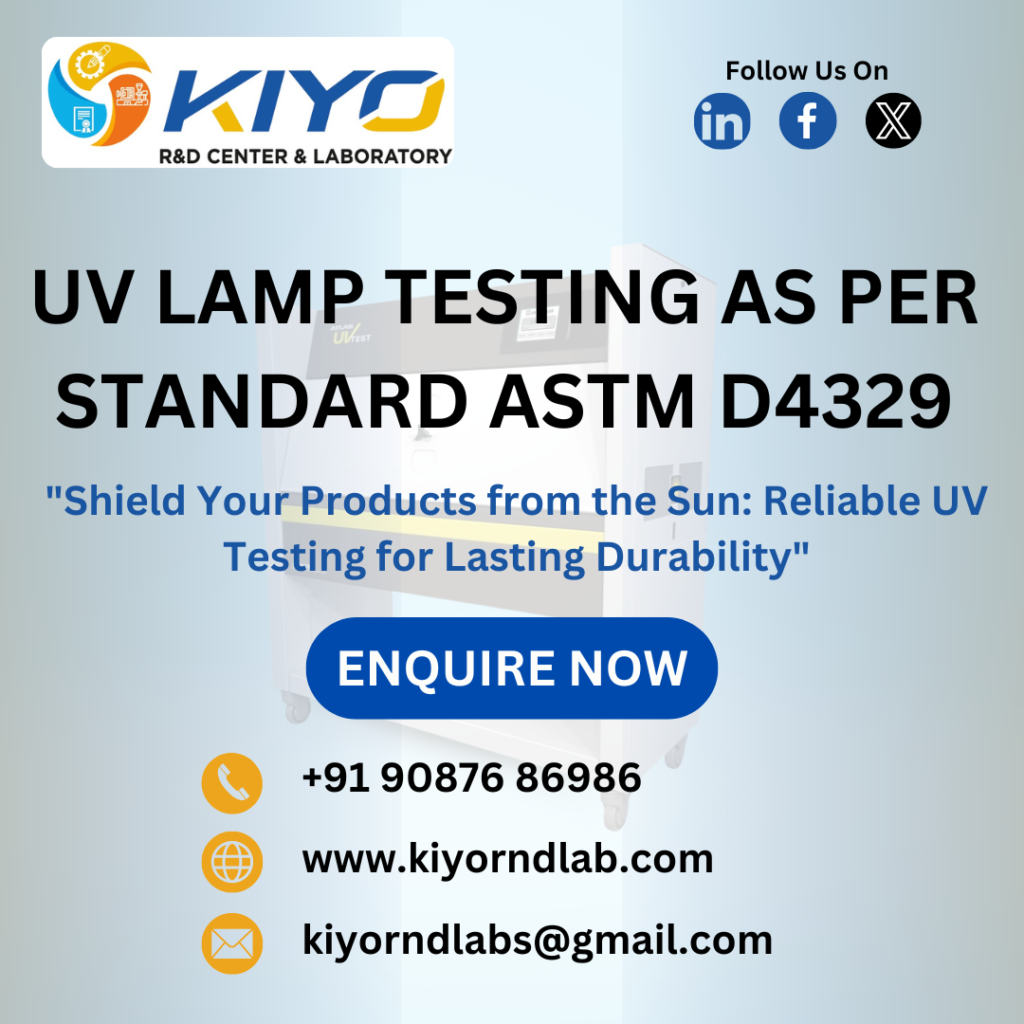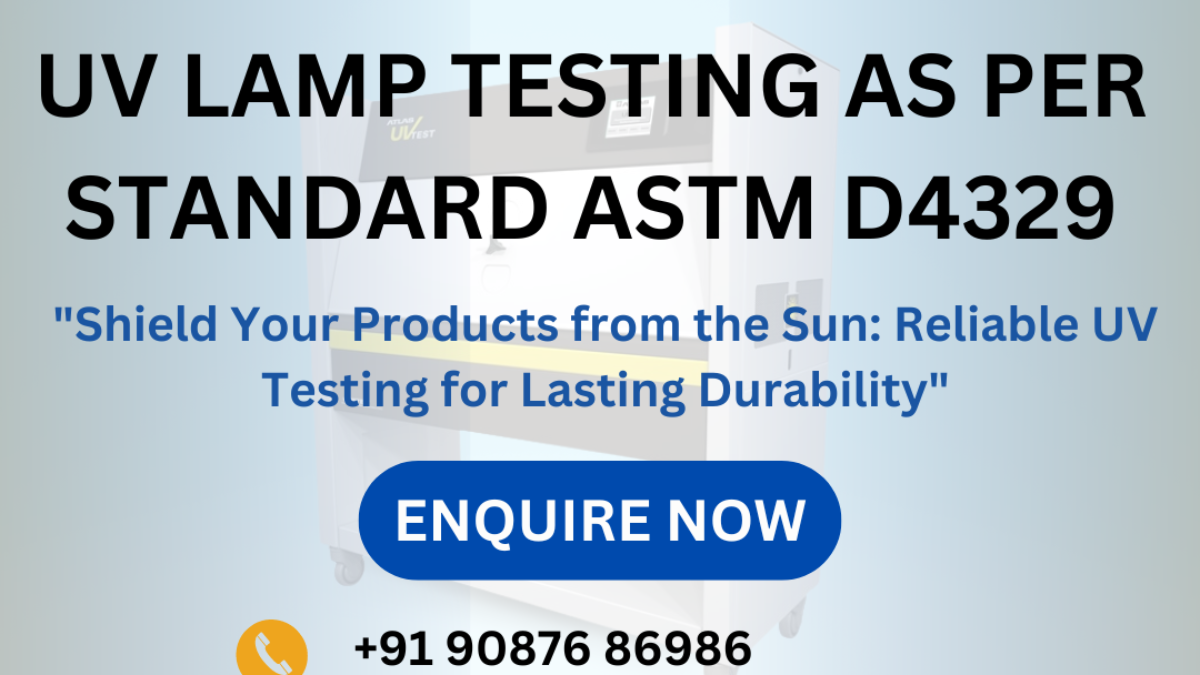UV Lamp Testing As Per Standard ASTM D4329
UV Lamp Testing for Plastics: Ensuring Longevity with ASTM D4329
Introduction
- In today’s world, where many products and materials are constantly exposed to the elements, the durability of plastics has become a critical concern. Sunlight, particularly its ultraviolet (UV) component, can significantly degrade plastic materials, leading to discoloration, loss of strength, cracking, and other forms of deterioration. ASTM D4329 is the globally recognized standard for testing the effects of UV exposure on plastics, ensuring that these materials can withstand harsh conditions over time.

What is ASTM D4329?
ASTM D4329 is a standard testing method developed by ASTM International to simulate the effects of UV light exposure on plastics under controlled laboratory conditions. It provides detailed protocols for accelerated weathering tests, where plastics are exposed to cycles of UV radiation and moisture to replicate the damaging effects of prolonged outdoor exposure. By following this standard, manufacturers and engineers can predict how their materials will perform when subjected to the sun’s UV rays over long periods, often condensing years of exposure into weeks or months.
The Importance of UV Lamp Testing
Ultraviolet (UV) radiation is one of the most damaging environmental factors for polymers and plastics. It can break down chemical bonds within the material, leading to:
- Color fading: UV exposure often results in noticeable changes in color, which can be a significant issue for consumer-facing products.
- Loss of mechanical properties: Prolonged UV exposure can reduce the strength, flexibility, and durability of plastic materials.
- Surface degradation: UV radiation can cause cracking, chalking, and loss of surface gloss, negatively impacting a product’s aesthetic and functional qualities.
Industries that manufacture outdoor products, automotive components, construction materials, and packaging materials must ensure their products are resistant to these UV effects. ASTM D4329 provides the necessary guidelines to simulate this type of degradation and assess material performance accurately.
The Process of UV Lamp Testing as per ASTM D4329
The testing process under ASTM D4329 involves subjecting plastic specimens to cycles of UV radiation and moisture to simulate real-world weather conditions. The test apparatus uses fluorescent UV lamps that emit radiation similar to the UV spectrum found in sunlight, with controlled temperature and humidity to create repeatable and reliable test conditions.
Here’s an overview of how the process works:
- UV Exposure: The specimens are exposed to UV radiation, usually using UVA-340 or UVB-313 lamps. These lamps replicate the most damaging portions of sunlight, particularly UV radiation that causes the most rapid degradation in plastics.
- Moisture Exposure: To simulate the effects of dew and rain, the plastic specimens are subjected to periods of condensation or water spray. This phase alternates with the UV exposure to mimic natural weather cycles.
- Controlled Temperature: During testing, the temperature inside the UV exposure chamber is closely regulated to simulate outdoor heat levels. Higher temperatures can accelerate the aging process and affect how plastics respond to UV radiation.
- Test Duration: The test can run anywhere from 500 to 2,000 hours, depending on the material being tested and the application requirements. These exposure times are designed to simulate months or even years of outdoor exposure.
- Post-Test Evaluation: After completing the test cycles, the plastic specimens are evaluated for signs of degradation. This includes checking for color changes, surface cracking, and loss of mechanical properties like tensile strength and elasticity. These measurements allow manufacturers to assess how well their materials will hold up under real-world conditions.
Applications of ASTM D4329
UV lamp testing is essential for a wide range of industries that rely on durable plastics in outdoor environments. Some common applications include:
- Automotive components: Exterior automotive parts such as bumpers, trim, and dashboards must endure long-term exposure to sunlight without losing their color, strength, or structural integrity.
- Building and construction: Roofing materials, siding, and outdoor furniture are continually exposed to UV radiation, and testing ensures these products remain aesthetically pleasing and functional over time.
- Outdoor consumer goods: Products like playground equipment, patio furniture, and sports gear must be UV-resistant to ensure safety and longevity.
- Packaging: Plastic packaging used in outdoor environments or under direct sunlight must maintain its integrity to protect the product inside.
Benefits of ASTM D4329 UV Testing
- Improved Product Durability: UV testing helps manufacturers identify materials that will last longer when exposed to sunlight, reducing the risk of premature failure in the field.
- Cost Savings: By identifying materials with superior UV resistance during the design phase, manufacturers can avoid costly recalls or product replacements due to UV-related failures.
- Customer Satisfaction: Products that retain their color, strength, and appearance after years of outdoor exposure are more likely to meet or exceed customer expectations.
- Regulatory Compliance: Many industries, especially automotive and construction, require compliance with ASTM D4329 as part of their quality and safety standards. Meeting these standards ensures that products will perform as expected in real-world conditions.

Conclusion
- UV lamp testing according to ASTM D4329 is essential for any manufacturer producing plastic products intended for outdoor use. It provides a reliable way to simulate years of exposure to sunlight and environmental conditions, ensuring that materials will stand the test of time. By following this standardized testing method, manufacturers can enhance the durability of their products, reduce costs, and meet stringent industry requirements.

